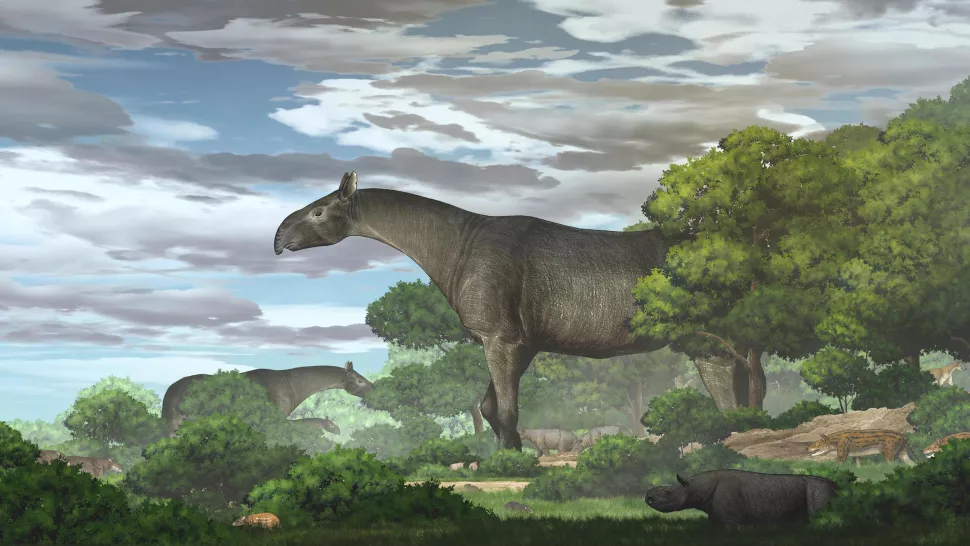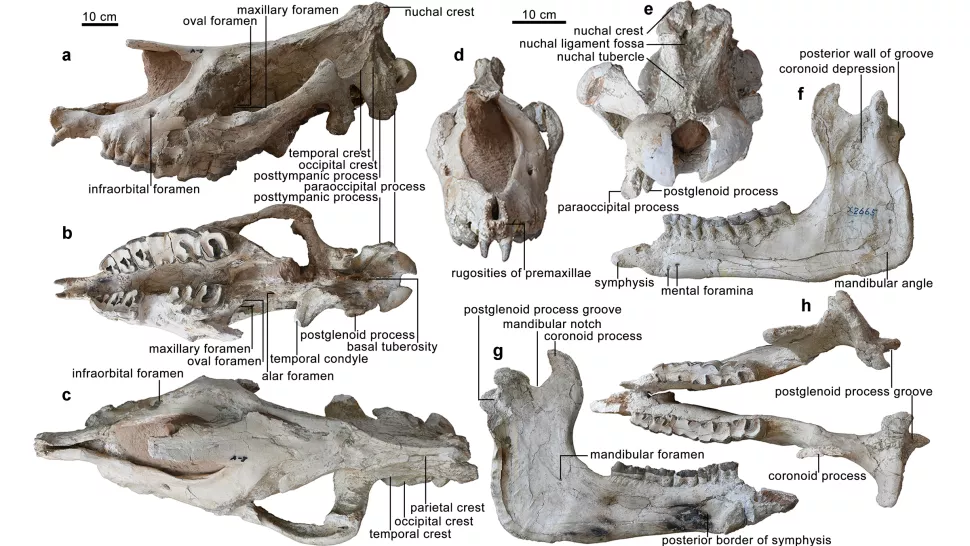O OVGA é um Centro de Ciência que desenvolve atividade de investigação aplicada e de divulgação científica na área da Vulcanologia, da Sismologia e da Geotermia.
Notícia -A A +A
Ancient giant rhino was one of the largest mammals ever to walk Earth
Notícia OVGA 22-06-2021
It was as heavy as four African elephants.

An illustration of Paraceratherium linxiaense chomping down on vegetation on what is now the northeastern Tibetan Plateau about 26.5 million years ago, during the late Oligocene epoch. (Image credit: Yu Chen)
The remains of a 26.5-million-year-old giant, hornless rhino — one of the largest mammals ever to walk Earth — have been discovered in northwestern China, a new study finds.
The newly identified species, Paraceratherium linxiaense — named after its discovery spot in the Linxia Basin in Gansu province — towered over other animals during its lifetime. The 26-foot-long (8 meters) beast had a shoulder height of 16.4 feet (5 m), and it weighed as much as 24 tons (21.7 metric tons), the same as four African elephants, the researchers said.
The new species is larger than other giant rhinos in the extinct genus Paraceratherium, said study lead researcher Deng Tao, director and professor at the Institute of Vertebrate Paleontology and Paleoanthropology at the Chinese Academy of Sciences in Beijing. A new family tree analysis of Paraceratherium species, including P. linxiaense, reveals how these ancient beasts evolved as they migrated across Central and South Asia at a time when the Tibetan Plateau was lower than it is today, Tao told Live Science in an email.
Researchers have known about the fossil trove at Linxia Basin, located at the northeastern border of the Tibetan Plateau, since the 1950s, when farmers there began discovering "dragon bones," Tao said. Digs in the 1980s revealed rare, but fragmentary giant rhino fossils. That changed in 2015, with the discovery of a complete skull and jaw of one giant rhino individual, and three vertebrae from another individual, both dating to the late Oligocene epoch (33.9 million to 23 million years ago).
When the researchers saw the fossils, the bones' completeness and "huge size … [were] a great surprise for us," Tao said. An anatomical analysis, in addition to the fact that the fossils were larger than those from other known species in the Paraceratherium genus, revealed that they belonged to a previously unknown Paraceratherium species.

The giant, well-preserved skull and jaw of one of the newly identified Paraceratherium linxiaense individuals. (Image credit: Tao, D. Communications Biology (2021); CC-BY-4.0)
The skull and jaw bones showed that P. linxiaense had a giant, 3.7-foot-long (1.1 m) head; a long neck; two tusk-like incisors that pointed downward; and a deep nasal notch, indicating that the animal had a trunk like that of a tapir. The giant rhino likely wrapped its trunk around branches so it could easily strip off leaves with its front teeth, Tao said.
P. linxiaense stood on four long legs that were good for running, and its head could reach heights of 23 feet (7 m) "to browse leaves of treetops," Tao said.
Source: Live Science, June 21st, 2021
